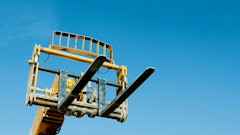
Just when we thought we were out of the weeds and ready to rock and roll in 2022, Mr. Putin threw another monkey wrench into the mix that has led to increased energy costs, particularly for petroleum-derived products. But move on we must, keeping this additional cost factor in mind.
Straight away, I planned to review here what I knew I would learn at the Independent Equipment Dealers Association (IEDA) annual meeting in Orlando, because the speakers were going to discuss the 2022 construction markets, as well as changes they would need to make when dealing with contractors going forward. And wow, what a program! Anyone connected with the construction industry would have taken away ideas on how to improve profitability while dealing with:
- Inflation
- Supply chain issues
- Workforce needs
- Interest rate hikes
- Cap-X plans
- Maintenance issues
- Technology to address contractor activities
Some of you reading this list are thinking these issues don’t apply to you. If that’s what you're thinking, you are 100% wrong. You are wrong because the construction industry realizes it has been on the wrong side of the productivity equation for the last 100 years and is now taking steps to cut costs while becoming more efficient. Just read the daily ForConstructionPros.com Headline News e-newsletter if you don’t believe me.
Stick with What You Do Best
Tom Christerson, director of sales at EquipmentWatch, started out the IEDA meeting with an example of what to expect in the market. He summarized a study that showed contractor input costs had increased between 25% to 29% in 2021, with an expectation of remaining at this level for some time. As part of the study, a group of contractors were provided with plans for nonresidential structures to be built in 2022. The participants were asked to submit their bids for these projects, which they did with an average 13% increase in costs.
All of the contractors bidding did so at levels well below their costs, and I guess they can do that if they find ways to cut costs and complete jobs faster than they normally would. In other words, they would need to do more with less material costs, less equipment costs and less payroll costs. Thus, the title of this month’s column, which shouts that improving your productivity is not just an idea to mull over but a must!
In other words, contractors need to tighten up the ship from stem to stern. Easy to say but tough to do. In summing up what I learned from the IEDA activities and the key point to help improve productivity: Do what you do best and let someone else do the rest.
Offload internal transactions that are not key to providing your work product. Such transactions could include:
- managing equipment costs and related maintenance
- office and billing procedures that could be improved by upgrading the use of your current system or finding a new one that is more efficient
- providing for the cost of ownership and operating costs of owned equipment
- shopping material costs and ensuring they are delivered in a timely fashion
- ensuring you have enough experienced staff to get the job done in a timely fashion
Equipment costs are now between 20% to 30% of a project; they used to be about 13% to 15%. The American Rental Association is projecting another big increase in rental activity (see www.ForConstructionPros.com/22068755). Their penetration index – percent of rental equipment compared to all equipment being used in construction – is close to 60%. I expect this number to keep climbing as contractors figure out owning equipment is not a break-even proposition.
What I’m seeing is the larger contractors are working to find ways to become up to 40% more efficient using new systems to manage workflow, equipment use, employee costs and material costs. The systems are out there, and if you add in outsourcing what other folks can do better, the more efficient you will become.
Cost Control
Since I was one of the presenters at the IEDA meeting, my goal was to make the equipment dealers aware of the watershed changes taking place within their customer base and what these customers may expect from them going forward. After all, if contractors have to cut costs, they expect their vendors to do the same and thus help them meet their goals. I, for one, asked the dealers to absorb the cost of owning and operating the equipment in terms of owned equipment or rental units.
As part of my presentation, I put up a slide to demonstrate how productivity improvements can increase profits. I compared a 10% increase in billing against a 5% decrease in both Labor Cost and Equipment Cost. The change is meaningful.
 Garry Bartecki
Garry Bartecki
By the way, the title of my presentation was “Making It Through 202???” That about says it all.





























